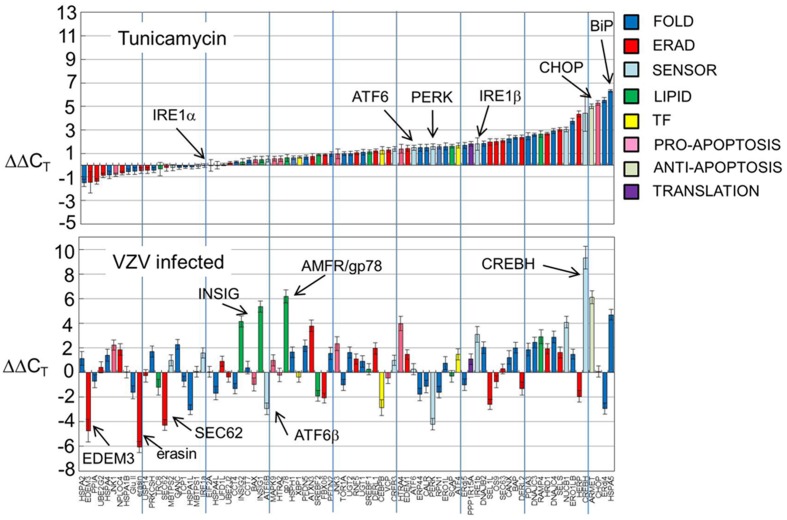Figure 2.
UPR gene transcription was significantly different in VZV infected cells vs. either uninfected cells or tunicamycin treated cells. Human fibroblast cells (MRC-5) were grown in tissue culture plates then infected with VZV-32 infected MRC-5 cells or treated with tunicamycin (TM), a N-glycosylation inhibitor. At 72 hpi, RNA was extracted from the VZV-32 infected cultures. For the TM treated cultures, RNA was extracted at 24 h post-treatment. RNA from the VZV-32 infected, TM treated and uninfected cell cultures was then converted to cDNA, which was applied to UPR specific PCR arrays (SA Biosciences); real time PCR was carried out on an ABI 7000 PCR instrument. The resulting CT values were then normalized (ΔCT) by the housekeeping genes of the plate and differences (ΔΔCT) between the uninfected and infected or tunicamycin treated values were computed and averaged. Graphs of the resulting values show that tunicamycin treatment, a classical ER stressor, resulted in upregulation of 66 of the 84 UPR genes with known folding chaperones such as BiP (in blue). Also upregulated was the pro-apoptotic factor CHOP. By contrast, only 43 of the UPR genes were upregulated in VZV infected cells although several, such as CREBH, were more upregulated than in tunicamycin treated samples. Error bars correspond to standard deviation when averaging.

